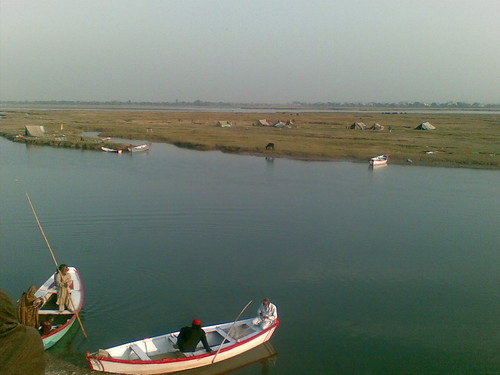
Jehlam—the land of warriors, braves, and martyrs, a land where societies, and so many tales are buried. It has been a land mark of ancient societies as it is situated in salt range. Attackers, trade caravans, and saints; entered subcontinent by passing this area. The
Budh Era:
The famous king of Buddhist religion, Ashoka used to rule
According to the books of history Alexander faced Raja Pores, a famous Indian king, at the bank of
The ruins of era of Sultan Shahbudin Ghori, Sultan Mehmood Ghhaznavi, Muhammad Bin Qasim, and Emperor Alta mash can be seen even today and many coins of such eras also found during the process of digging.
English era:
During the war of freedom of 1957 two platoons and an arterly were present in Jehlam Cantonment. English divided the both platoons as the threat of rebellion by Muslim army, and tried to snatch their arms but Muslim soldiers showed great resistance and killed many English and Sikh officers and about 150 Muslim soldiers were martyr. This way people of Jehlam made it a land of martyrs.
During the British rule Jehlam was among the 4 districts of
Company garden, civil lines is a beautiful garden which is adjacent to courtyard, it was build by the heads of East India company, there was a stage for band performers, a lawn for deer, and a grassy field, among them the trees, ever loaded with fruits, are the major attractions for the visitors. There used to be a tennis court and a badminton court; now they are no more and a mirage hall has replaced it—to me it must have ruined the beauty of garden.
There were two Inns in Jehlam during British rule one of them was at the bank of river known as Mangal Sen Ki Saraaye (Mangal Sen’s
Jubilee Ghat- it is monument built by Lala Dhanip Rai (he was an honorary Magistrate in English era), at the bank of river and it was built in the celebrations of crowning King Jorge IV. As this monument is at the bank of river so it is a public point for gatherings and arranging events. This place also has privilege to be witness of many events during the freedom struggle. Quaid e Azam, Fatima Jinnah, and Raja Ghazanfar Ali addressed a public gathering here. The place where Quaid addressed is now known as Pakistani Medan (ground).
There was an important guruduwara of Sikh religion beside the Jubilee ghaat, now this building is used as investigation center of CIA police. The historic mosque—Masjid Afghanan, is also located near jubilee ghaat. This mosque is also a
No comments:
Post a Comment